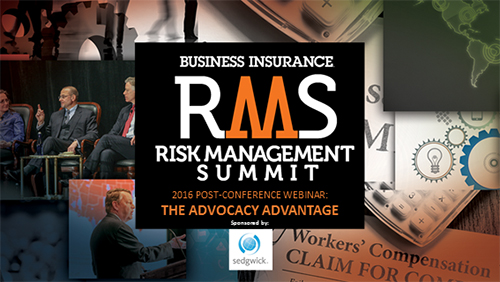
Workers’ compensation is complex, process-intensive and sometimes confusing -- as we in the industry know. When an injured employee who is unfamiliar with it attempts to navigate the system, the complexities can be daunting, sometimes leading to frustration, fear, disengagement and, even worse, litigation. Employers and others are discovering the value of providing transparent communication, compassionate care and a focus on the employee experience as part of a more encompassing advocacy approach. We’ve been hearing increasingly about advocacy as an industry buzzword and focus, but when we get to the heart of it, what kind of impact is the trend toward advocacy really making in the industry? Is it just a big idea or is it prompting real change and adding value to our processes to benefit the people at the center of workers’ compensation?
I believe we are on the leading edge of a true paradigm shift in workers’ compensation in America. The workers’ compensation system hasn’t materially changed in nearly 100 years, but as we speak with more and more industry leaders at events like the recent Alliance of Women in Workers’ Compensation workshop ahead of the WCRI Conference in Boston and this week’s Business Insurance Risk Management Summit, it’s evident that momentum is building around a logical, yet very simple, approach to injured worker communication and engagement that is based in compassion and built on trust. Employers are starting to find the value in real-world application and are seeing tangible results. I have been fortunate to see these results take shape firsthand as many Sedgwick partners have become early adopters of the approach.
At its core, advocacy is about doing the right thing, simplifying the process and removing potential conflict from interactions with injured workers during the claim adjudication process to expedite a healthy and appropriate return to employment and productivity. It may take the form of providing assistance and access to quality healthcare, explaining the “process” of workers’ compensation, setting expectations on timelines, benefit rates, forms they will see, what they should expect when they are ready to return to work, or coordinating resources to ensure the employee’s welfare remains at the forefront throughout the treatment and recovery process. The approach taken doesn’t always look the same, but the result usually does. The injured worker experience is enhanced and the ultimate outcome for all is consistently positive.
Some companies may use in-house advocates, and safety or wellness departments with outsourced support. Others may look to a partner to incorporate an advocacy approach on their behalf. For example, one of our customers is employing an outsourced model with an advocate/clinical team partnership on the front end of an event. Immediately following a first report of injury, the advocate calls the injured employee to answer questions, resolve concerns and provide guidance and reassurance. They are bringing the clinical specialist onto the line and, together, helping direct employees to the right healthcare provider and navigate the claims process as a team.
The key is that you can’t fake advocacy, and you don't have to. The change must be authentic and fit within your corporate culture. It's not that hard and I am sure it's what your organization and your culture is already about. It's likely just messaging through actions. All employers can make changes to improve the injured worker experience after they suffered an unanticipated and unwanted injury at work. When we familiarize injured employees with the workers’ compensation process and work together to make care easy and effective, we are not just making workers’ comp better, we are making people better.

If you are interested in hearing additional perspective and real-life examples of advocacy in action, join the upcoming Business Insurance Risk Management Summit follow-up webinar on March 31, where two proactive employers, who have embraced employee advocacy as an integral part of their claims program, join Sedgwick to talk about putting it into practice. The time for change is now; we invite you to be a part of it and learn more about the advocacy advantage.
Scott Rogers, EVP, Casualty Operations, Sedgwick